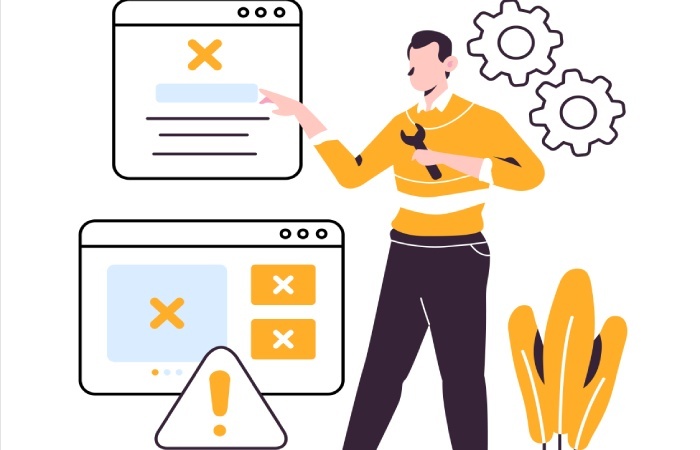Cold outreach has always been a tightrope walk. On the other hand, businesses and recruiters are seeking to connect with new prospects and initiate conversations. On the other, sending too many emails to the wrong people at the wrong time can harm the sender’s reputation, kill deliverability, and even have a domain blacklisted.
It’s also why combining vetted contact lists with finely tuned email sequences is now a staple of every modern outreach program. Rather than sending bulk emails to unknown addresses, teams may be able to collect a cleaner list and finally personalize communications, making it easier to delay them in a way that doesn’t appear insincere.
Why Verified Lists Matter
The foundation of safe sending is the quality of the list. A list of stale or invalid email addresses can significantly damage your sender’s reputation. ISPs track bounce rates, and anything above a few percentage points can raise red flags for them about your account.
Validation tools combat this issue by checking data against multiple sources, weeding out inactive or fake addresses. When you launch with a pre-validated list, every email sent from your account has an exponentially higher chance of reaching the inbox, rather than bouncing or being flagged as spam. Clean data is also important in that your engagement metrics — such as open and reply rates — will be more accurate.
The Role of Sequenced Outreach
One cold email is seldom enough. Research indicates that it’s typically from 3 to 6 touches before a prospect will respond. Email sequences are the way to solve this.
A sequence is an organized and personalized collection of messages sent over a period of time. Rather than bombarding an email recipient with daily nudges, a well-timed sequence of messages spaces them a few days apart, adds value at each step, and automatically gives up once the person responds.
Some important aspects of an efficient sequence are:
- Cadence: Wait 2–3 business days from the first email, then separate later follow-ups by 3–5 day increments.
- Timing: Aim for working hours in the recipient’s time zone, usually late morning or early-to-mid afternoon.
- Personalization: Add relevant information—such as the recipient’s name, role, or company—so the message feels more personalized.
- Obvious value: With each step, there should be something new — a nugget of insight, a case study, or a solution to a pain point.
This technique allows your brand to stay top-of-mind, without the appearance of spammy persistence.
Modern platforms that provide automated email sequences allow businesses to:
- Personalize messaging at scale
- Space out communications for better timing
- Track engagement metrics to optimize strategy
- Reduce manual work for sales teams
The result is a workflow that feels more natural to prospects while saving time for senders.
Safer Sending Through Balance
When verified lists and sequences are joined, outreach gets safer and stronger. Here’s why:
- Bounce rates are low, since the list is clean.
- Prospects become more engaged as follow-ups are spaced strategically.
- The automation is respectful of responses — it stops messaging after someone replies.
- Reputation benefits, since ISPs are seeing steady, organic behavior instead of spikes.
This balance of accuracy (a listing) and strategy (a sequence) works with rapid response for business, allowing you to grow your reach while not burning bridges.
Implementing SPF, DKIM, and DMARC alongside verified lists and sequenced outreach strengthens email security, boosts deliverability, and protects your domain reputation.
Best Practices for Reliable Outreach
Here are a few things you can attempt to pull it off:
- Preheat your domain before sending emails at high volumes. Begin with a few and slowly work up.
- Segment your audience by job function, industry, and region. Instead, customizing content for each segment will improve relevance.
- Avoid over-automation. Personalization should be about giving a human touch, not just forced.
- Track metrics regularly. High open rates and low reply rates may be an indicator of weak messaging; high bounces mean list problems.
- Respect compliance rules. Provide them with an easy way to opt out and ensure you are privacy compliant according to regulations such as GDPR or CAN-SPAM.
Tools That Make It Easier
There are a few systems that streamline this process by integrating validation and automation. For example, SignalHire offers verified email lists and automated email sequences in a single platform. Others, such as Apollo and Snov.io, offer similar features with varying costs, scopes, and integrations.
The point here isn’t to pick a tool so much as to adopt a workflow in which clean data is fed into respectful outreach. It becomes very easy to manage multiple campaigns simultaneously if you have a service that you can rely on, because no one likes manual work, right?
For teams that are heavily reliant on LinkedIn or other social platforms, browser extensions make it easy to discover contact information and directly import it for outreach purposes. No more fussy spreadsheets, and it drives prospect databases as you go!
Relying on multiple disconnected apps often complicates outreach. An all-in-one software solution simplifies the workflow by combining verified contact sourcing, sequence automation, and performance analytics.
Measuring Outreach Success with Data
Verified lists and automated sequences are only half the battle — performance tracking is what guarantees success in the long run. Without measuring, teams won’t be able to tell what works and what they need to further refine.
Key metrics worth monitoring include:
- Open rates – show how subject lines and senders affect visibility in email inboxes.
- Click-through rates — provide a sense of how engaging the content is.
- Response rates – indicate if you’re personalizing effectively.
- Bounce rates – to see if lists remain clean and healthy.
- Unsubscribe rates – whether your frequency is wrong or you have the wrong message.
Being able to see these metrics over time allows companies to fine-tune not only individual campaigns but broader outreach strategies. Performance insights, combined with verified flags and thoughtful sequencing, transform outreach into a workflow that continually improves over time.
Common Mistakes to Avoid
Even with good tools and methods, outreach efforts can also flop if not executed carefully. Here are frequent pitfalls:
- Bombarding people with too many messages in a short span.
- Disregarding responses whilst continuing to send canned automatic follow-ups.
- Not testing subject lines or email copy prior to scaling.
- Failing to clean your lists. We send “list cleanses” on a regular basis to customers who do. We have not seen significant email bounce spikes from not performing list cleanses and avoiding spam traps.
- Ignoring compliance can cause legal problems.
What matters here is not doing them – some of the best advice also involves things to avoid. It can take weeks of effort to build up a domain and list warming, only for one mistake to quickly undo it all.
Final Thoughts
Writing the perfect email is part one of safe and effective outreach, but it’s only half the battle — it takes not one, but two key ingredients: verified contact data and sequenced communication. Authorized lists ensure that your emails reach their intended recipients, and intelligent sequencing builds trust while keeping you out of spam folders.
Platforms like SignalHire and Apollo make this a quicker process, but success lies in striking a balance: respect your contact’s time, add real value to their life, and use automation as a guide – do not replace it with manual efforts.
When it’s done the right way, sequenced outreach with verified contacts reduces your chances of getting dinged by email servers and actually does a better job of generating the important conversations that you’re looking for through outreach.






